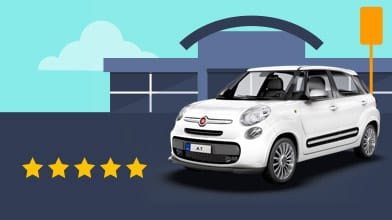Back in the day, if you wanted to sell your car, you would usually do it in one of two ways: the first obvious option would be to print out a piece of paper and stick it to your car; the second, to go to several second-hand car dealerships and see what they might offer you. Both these options were very time-consuming and inconvenient for the seller. Also, if you’re looking from the buyer’s perspective, there was a decided lack of information transparency, that might result in you ending up with a “lemon”.
The lemons problem was popularized in 1970 by George Akerlof, and refers to the asymmetric information problem that arises when buyers cannot determine whether a car is a “peach” (high-quality) or a “lemon” (low-quality). Buyers’ willingness-to-pay will then fall around the average value of a peach and a lemon. The peach sellers, who know the true value of their car is above what buyers are willing to pay, will then naturally leave. As more and more sellers of high-quality cars leave the market, the average willingness-to-pay will decrease further, leading to a feedback loop. This adverse selection problem will eventually leave a market full of lemons (The Economist, 2016).
Marktplaats.nl, founded by Rene van Mullem in 1999 (Marktplaats, 2017), helped reduce this information asymmetry by offering an electronic market where buyers could easily acquire information about the price, condition, etc. from different sellers all in one place, reducing search costs.
Marktplaats.nl is an auction site. There are four different types auctions, but the important ones to know here are bilateral negotiation and sales auction, specifically the English sales auction. In the first model, one buyer and seller negotiate to come to a price. In the old situation, a seller would be negotiating with a potential buyer, and if they couldn’t come to an agreement, move on to the next. This selling process can be classified as one or several bilateral negotiations. In the second model, multiple buyers bid increasingly higher prices on a product from one seller, which is how Marktplaats.nl works.
Marktplaats.nl offers the NAP-logo, which signals to the under-informed party, the buyers, that the mileage meter of the car hasn’t been tampered with. This helps reduce information asymmetry. For sellers, advantages include the ease and convenience of placing an advertisement. They are able to reach a broader audience, not as limited by geographical boundaries. Additionally, at different fees they can select the package they want to increase their exposure even more.
In conclusion, Marktplaats.nl disrupted the second-hand car market by offering an electronic market that moved the model typically used in this industry from bilateral negotiation to sales auction, increasing convenience for both buyers and sellers, lessening information asymmetry and thereby partly reducing the adverse selection problem. Our future prediction: Marktplaats.nl will develop more labels and inspections like the NAP, thereby reducing information asymmetry further, consequently increasing buyers’ willingness-to-pay and attracting more “peaches” than “lemons”.
References
The Economist (2016, July 23). Secrets and agents. Retrieved October 13, 2017, from https://www.economist.com/news/economics-brief/21702428-george-akerlofs-1970-paper-market-lemons-foundation-stone-information
Marktplaats (2017). Help & Info. Retrieved October 13, 2017, from https://www.marktplaats.nl/i/help/over-marktplaats/index.dot.html
Save


Hello Group 73,
Really interesting topic you’ve got over here. Concerning your future prediction, I agree that Marktplaats should develop more labels and inspections like to NAP to reduce information asymmetry further, but to a certain level. Think of it this way; by providing more and more information to (potential) customers, what incentives will there be left for sellers to sell any products?
Buyers’ willingness to pay will indeed increase, however Seller’s willingness to sell will decline and therefore less products will be sold. The only incentive I can think of for a seller to sell products is perhaps reducing shelf space, as the money the seller could gain upon the value of the product sold would be too low. This way, I think, the market will collapse just like what was the case with adverse selection at buyers.
To halt such a market collapse, I think that Marktplaats should indeed develop and add more labels to its service, however to a certain amount. Only this way, Marktplaats will continue to be a successful platform for buyers and sellers of cars for instance.
Hey Diyari,
Good point. By providing too much information, Marktplaats would only be attractive for people who don’t have the time or willingness to search for buyers in a different way, and just want a quick and easy exchange for cash. As clearing up space is one of the main motives of people selling their old stuff, I don’t think the market would collapse. However, it could shrink quite a bit by sellers with a strong profit incentive leaving the market.